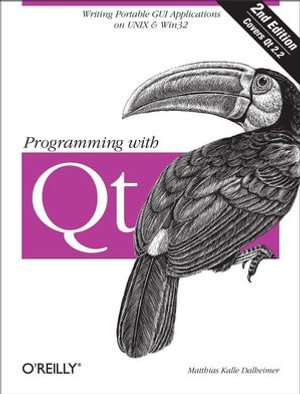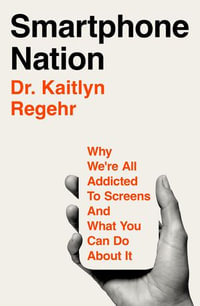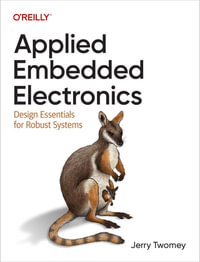
Programming with Qt
Writing Portable GUI applications on Unix and Win32
eText | 22 January 2002 | Edition Number 2
At a Glance
eText
$45.09
or
Instant online reading in your Booktopia eTextbook Library *
Read online on
Desktop
Tablet
Mobile
Not downloadable to your eReader or an app
Why choose an eTextbook?
Instant Access *
Purchase and read your book immediately
Read Aloud
Listen and follow along as Bookshelf reads to you
Study Tools
Built-in study tools like highlights and more
* eTextbooks are not downloadable to your eReader or an app and can be accessed via web browsers only. You must be connected to the internet and have no technical issues with your device or browser that could prevent the eTextbook from operating.
ISBN: 9781449390938
ISBN-10: 1449390935
Published: 22nd January 2002
Format: ePUB
Language: English
Number of Pages: 522
Publisher: O'Reilly Media, Inc.
Edition Number: 2
You Can Find This eBook In
Non-FictionComputing & I.T.Operating SystemsComputer HardwareStorage Media & PeripheralsComputer Programming & Software DevelopmentProgramming & Scripting LanguagesSoftware EngineeringComputer ScienceSystems Analysis & DesignDigital Lifestyle & Online World: Consumer & User GuidesPortable & Handheld Devices User Guides
This product is categorised by
- Non-FictionComputing & I.T.Operating Systems
- Non-FictionComputing & I.T.Computer HardwareStorage Media & Peripherals
- Non-FictionComputing & I.T.Computer Programming & Software DevelopmentProgramming & Scripting Languages
- Non-FictionComputing & I.T.Computer Programming & Software DevelopmentSoftware Engineering
- Non-FictionComputing & I.T.Computer ScienceSystems Analysis & Design
- Non-FictionComputing & I.T.Digital Lifestyle & Online World: Consumer & User GuidesPortable & Handheld Devices User Guides






















